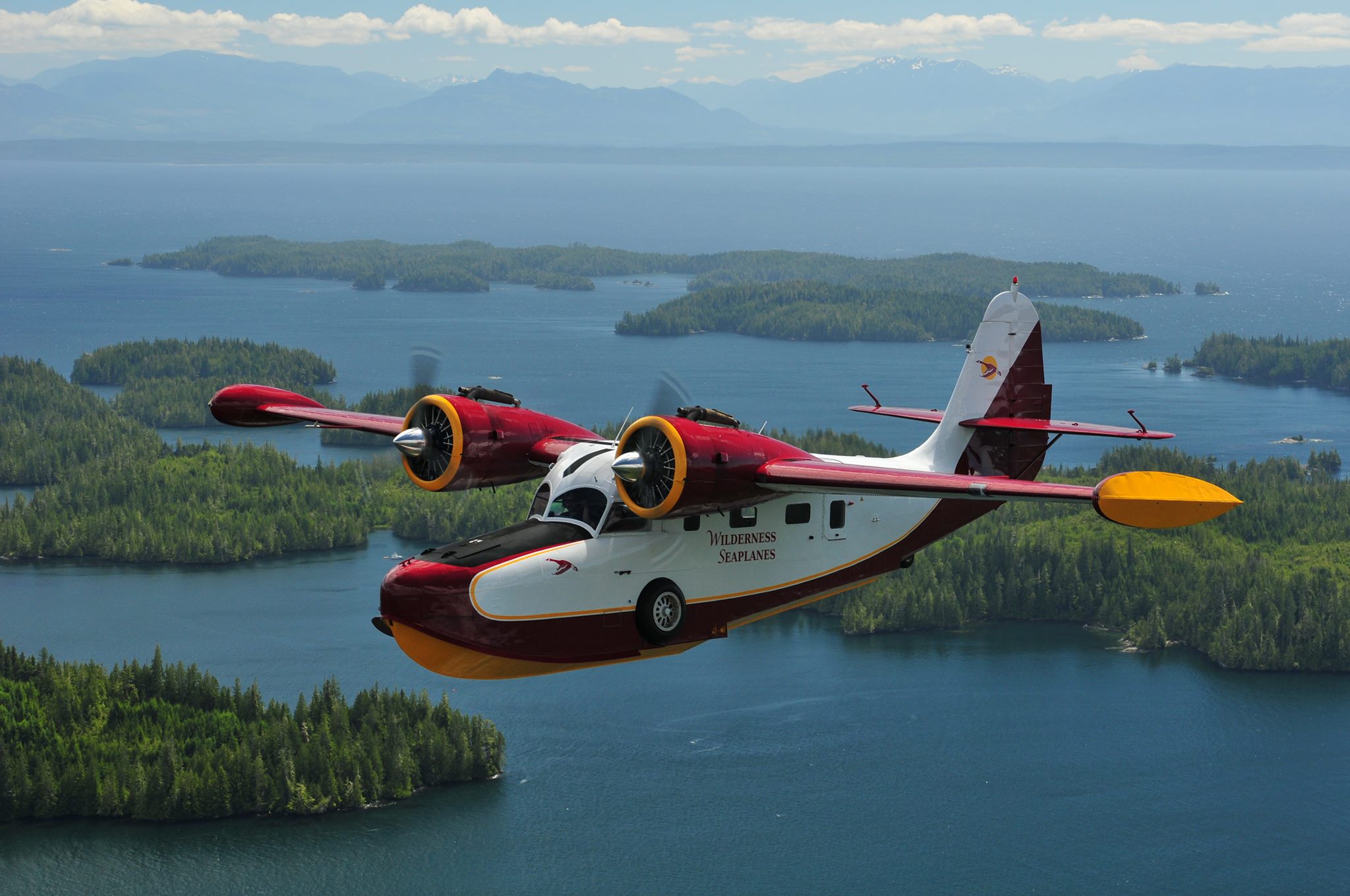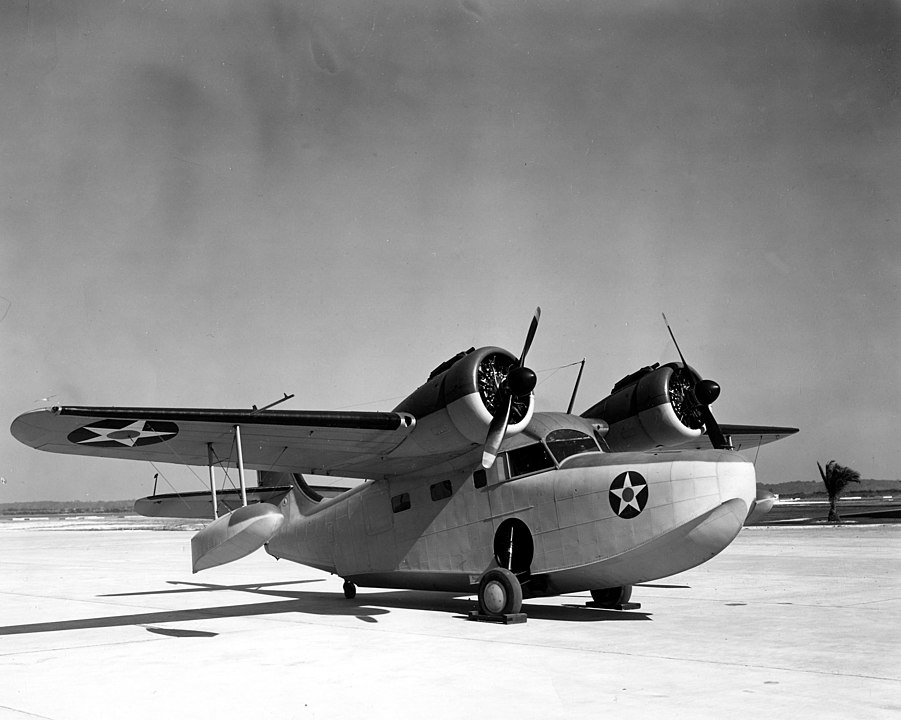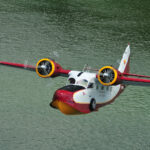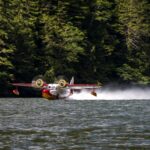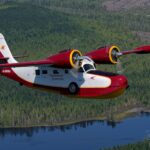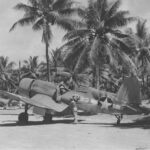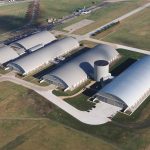Without the Goose making an appearance, Christmas on Canada British Columbia’s wild coast is incomplete… Even Scrooge acknowledges the significance of having a Goose at Christmas. And it also applies to the hardy Central Coast residents and workers of British Columbia, who rely on a Goose for holiday cheer.
Three historic Grumman Goose aircraft are still used for commercial flights by Wilderness Seaplanes out of Port Hardy, serving 50+ villages, resorts, and work camps along the West Coast. Their “flock” of red and white Grumman Goose aircraft that mimic Santa’s sleigh fly through snow, slush, and rain to carry people and gifts to their houses.
The last commercial flight of the iconic twin-engine seaplane is flown by Wilderness Seaplanes out of Port Hardy on northern Vancouver Island. These throughout the year fliers provide a connection for 50+ West Coast communities, resorts, and work encampments.
The Grumman Goose, sometimes known as an amphibious flying boat, was made between 1937 and 1944. Only 345 of what were initially intended to be “flying yachts” for affluent businessmen on the east coast of the United States were ever built. But the military and aviation businesses have long made substantial use of reliable aircraft in British Columbia. The Goose has been providing service to coastal towns in British Columbia for more than 50 years under several corporate names.
They were designed specifically for this task. They are adaptable and the ideal size. It has survived because they genuinely haven’t produced an airplane that’s better for it. The Goose can easily land at a civilian airfield, on the water, or on a mud airstrip and is equipped to handle a limited number of passengers and their belongings. It might even land on the sea and roll up a boat ramp if a dock is not accessible.
Three Grumman Goose are kept by the business; the oldest is 83 years old. The central coast, however, has developed into a hub of competence in flying and repairing aircraft as a result of its prolonged use in the area. In the weeks before Christmas, they essentially have to quadruple the number of flights, and these extra trips are primarily for cargo rather than people. As you would guess, Wilderness Seaplanes move plenty of boxes at this time of year, particularly in recent years, given that everyone now shops online.
With the more unpredictable winter weather, those traveling within and outside of the villages don’t have many alternative options for getting home. The BC Ferries service is rare, has little room, and is sometimes booked months in advance, and it can be dangerous to travel by boat for any distance in the cold weather. Many visitors visiting far-flung First Nations villages like Klemtu, Bella Bella, or Knight Inlet are frequently returning home after an extended absence. Many young people leave the villages, so it’s always entertaining to witness large reunions on the docks. Furthermore, half of the boxes that are unloaded from the airline frequently have festive Christmas wrapping on them.
Wilderness Seaplanes began operations as a separate entity in May 2016; prior to that, the company was the seaplane division of Pacific Coastal Airlines which has a long and respected history providing air service here on the west coast. Pacific Coastal started out back in the 80’s as a small local airline connecting Port Hardy and Powell River to Vancouver. After having grown into a regional airline serving all of BC, Pacific Coastal realized that they were unable to be competitive in both the airline and seaplane markets simultaneously. For this reason, it was decided to separate the Seaplane service from the larger airline. Pacific Coastal still retains ownership of the seaplane service and Wilderness continues to operate to the high standards expected by its customers.
At present Wilderness Seaplanes provides service from Port Hardy and Bella Bella to the BC Central Coast. They operate six seaplanes, 4 of which are amphibious. The company is especially proud of its Grumman Goose fleet, Wilderness Seaplanes is the last commercial operator worldwide of famous amphibious aircraft, the classic ‘boats’ from a glorious era of travel. They meticulously maintain the ‘Gooses’, as well as their DeHavilland Beavers and Cessna 185, all from our maintenance base in Port Hardy.
There are normally about a dozen people waiting when the Goose shows up, and you can tell that they’re quite pleased to receive all their packages and gifts. You could describe Bella Bella town of 1,200 inhabitants, as being somewhat tiny. However, it continues to serve as a bigger center for travelers who use the Goose to go to even smaller nearby First Nations settlements. On the Central Coast, flying on the Goose is such a common occurrence that it isn’t truly seen as a unique occasion. For people living there, it’s similar to taking a bus to get to the next stop. It is an instrument you must use to reach wherever you wish to go.
The Grumman Goose, a truly special airplane, brings together people, locations, and individual memories in the coastal villages, especially throughout the holidays. For more information visit www.wildernessseaplanes.com







